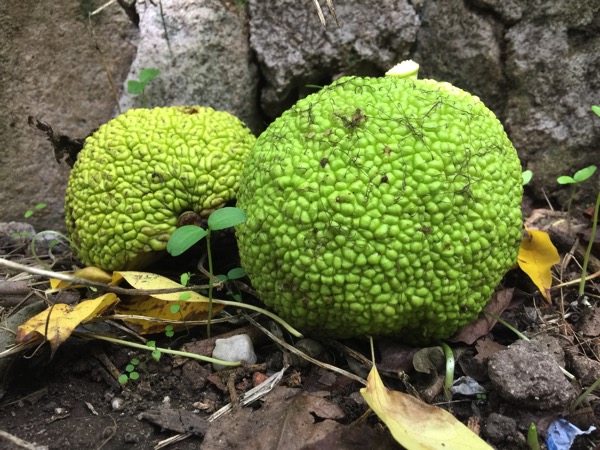- Unlocking the genetic diversity of the undomesticated rice relative Oryza longistaminata. Natural hybrids discovered in IRRI genebank can accelerate breeding.
- Evidence for mid-Holocene rice domestication in the Americas. Another rice domestication?
- Evaluation and strategies of tolerance to water stress in Paspalum germplasm. A species for every purpose.
- Evaluation of Cassava Germplasm Accessions for High Tuber Yield and Starch Content for Industrial Exploitations. Watch Me681 take over. At least in India.
- Does intercropping enhance yield stability in arable crop production? A meta-analysis. Yes.
- Collection, Evaluation and Utilization of Cotton Germplasm. Over a thousand accessions!
- Treasure in the vault: The guardianship of ‘heritage’ seeds, fruit and vegetables. “Treasure” is a loaded term.
- Will the same ex situ protocols give similar results for closely related species? Yep.
- Global Hotspots of Conflict Risk between Food Security and Biodiversity Conservation. Madagascar is particularly worrying.
- Genetic diversity assessment of a set of introduced mung bean accessions (Vigna radiata L.). Germplasm from USDA genebank could be useful in China.
- Database of European chestnut cultivars and definition of a core collection using simple sequence repeats. Not sure you can call it European when 96 of 118 accessions are from Spain, but anyway.
- Genome of wild olive and the evolution of oil biosynthesis. Two genes explain all that oil…
- Did Greek colonisation bring olive growing to the north? An integrated archaeobotanical investigation of the spread of Olea europaea in Greece from the 7th to the 1st millennium BC. …which would have been intensely interesting to early Bronze Age elites.
- The draft genome of tropical fruit durian (Durio zibethinus). “Transcriptomic analysis showed upregulation of sulfur-, ethylene-, and lipid-related pathways in durian fruits.” You don’t say. Let’s engineer them into olives. Paleopolyploidizations here too, as in olives.
Osage orange outbreak
Took me a while to retrieve the proof I knew I’d need to fully convince Luigi. Here it is:

And in case the upload process somehow mangles the EXIF data (which are there in my copy) Lat is 41.88761166666666 Long is 12.466925 and, well, that’s all you really need.
Occasional Osage orange occurs in Rome
The Osage orange? Yeah, I didn’t know it either, but Maclura pomifera apparently “has a long and interesting history of use by both Native Americans and early pioneers.” I heard about it for the first time when Jeremy sent me a little piece this morning about Jared Rydelek, a YouTuber who goes around the world tasting unusual fruits. Which is a really nice gig if you can get it. Though somewhat disappointing in the specific case of the Osage orange, it seems. Sometimes there’s a reason why neglected species are neglected. Anyway, Jeremy did know about Maclura, it turns out, albeit mainly as a hedge, and because he occasionally walks under some specimens when wandering around Trastevere, of all places.

LATER: Corrected spelling mistake in name of the damn thing.
Nibbles: Digital lettuce, Dutch seeds, Durian genome, Jackfruit 101, Ag origins, Palestinian watermelon, Pumpkin evolution, Wine trade
- Dutch lettuce collection to be sequenced.
- Ah yes, the Dutch are real seed visionaries.
- Durian next?
- Maybe jackfruit?
- We should never have given up being hunter-gatherers.
- But then we wouldn’t have watermelons. Or, later in the year, pumpkins.
- Or wine.
Brainfood: Antioxidant adzuki, Sorghum gaps, Natural rubber diversity, Non-flying geese
- Phytochemical distribution and antioxidant activities of Korean adzuki bean (Vigna angularis) landraces. A cluster of about 10% of 200 Korean landraces have higher antioxidant activity, and smaller seeds. Watch them take over the world.
- Sorghum germplasm from West and Central Africa maintained in the ICRISAT genebank: Status, gaps, and diversity. Lots of gaps, but Nigeria isn’t one of them.
- A century of guayule: Comprehensive genetic characterization of the US national guayule (Parthenium argentatum A. Gray) germplasm collection. The future of natural rubber is in Texas.
- Contribution of both positive selection and relaxation of selective constraints to degeneration of flyability during geese domestication. Wild geese chased no longer due to strong selection on mitochondrial respiratory chain genes.